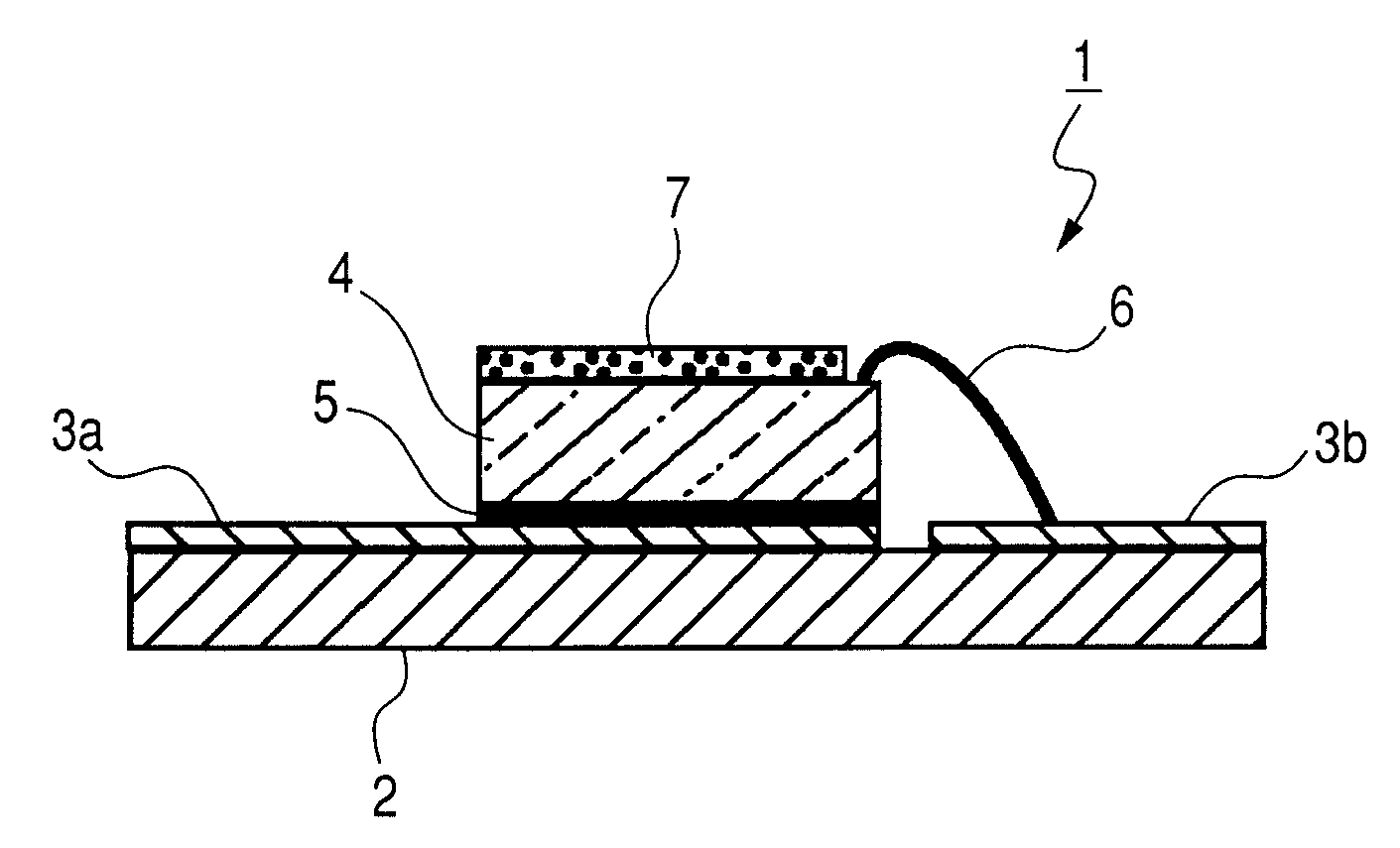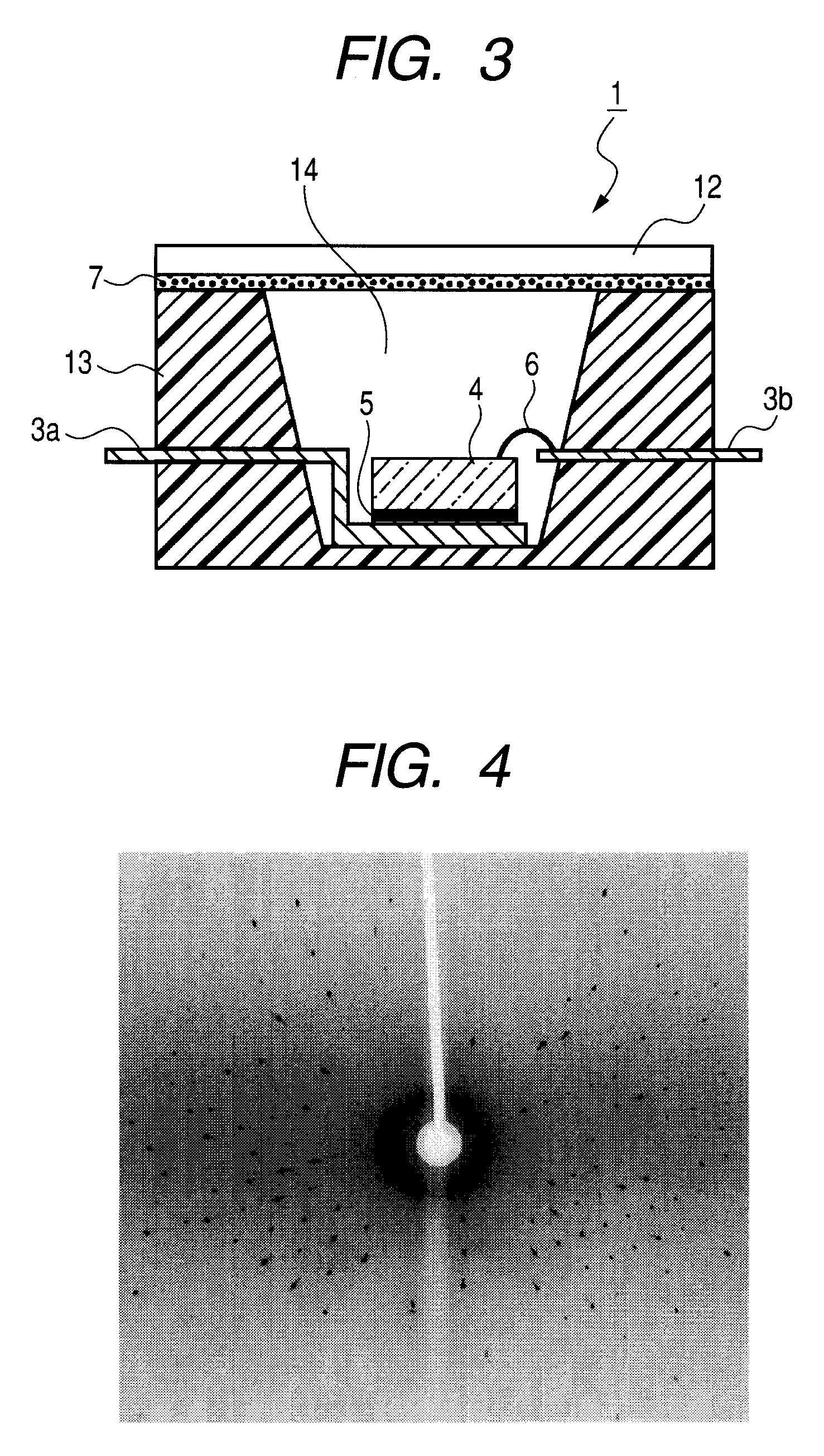Light emitting device
a light emitting device and phosphor technology, applied in the direction of discharge tube/lamp details, discharge tube luminescent screens, discharge tube/lamp details, etc., can solve the problems of difficult to realize a high-power white light emitting device, non-uniform spectrum of obtained white light, etc., to achieve power saving, long life, and small size
- Summary
- Abstract
- Description
- Claims
- Application Information
AI Technical Summary
Benefits of technology
Problems solved by technology
Method used
Image
Examples
examples 1a to 1d
[0230]In Examples 1a to 1d, Phosphors 1 to 4 were used as the first phosphor. As shown in Table 4, using Phosphor 1 in Example 1a, using Phosphor 2 in Example 1b, using Phosphor 3 in Example 1c, and using Phosphor 4 in Example 1d, the phosphor pastes were produced. The light emitting devices according to Examples 1a to 1d were manufactured using these phosphor pastes.
examples 2a to 2d
[0231]In Examples 2a to 2d, Phosphor 2 was used as the first phosphor, and Phosphor 5 was used as the second phosphor. The phosphor pastes were produced using a mixture of Phosphor 2 and Phosphor 5 at a combination ratio (weight ratio) shown in Table 4, and light emitting devices according to Examples 2a to 2d were manufactured using these phosphor pastes.
[0232]
[0233]The phosphor paste was produced using only Phosphor 5 as Reference 1, and a light emitting device according to Reference 1 was manufactured using this phosphor paste.
TABLE 4combination ratio (weight ratio)PhosphorPhosphorPhosphorPhosphorPhosphor15234Example 1a1000000Example 1b0010000Example 1c0001000Example 1d0000100Example 2a0307000Example 2b0356500Example 2c0406000Example 2d0455500Reference 10100000
examples 3a to 3h
[0258]In Examples 3a to 3h, Phosphor 2 was used as the first phosphor, and Phosphor 5 was used as the second phosphor. The phosphor pastes were used in which Phosphor 2 (yellow) and Phosphor 5 (blue) were mixed at a combination ratio (weight ratio) of 37 (yellow):63 (blue). These phosphor pastes were applied using a spin coater with the individual spinning numbers and thicknesses shown in Table 6, thereby forming Phosphor layers 7. Thus, the light emitting devices of Examples 3a to 3h were manufactured.
PUM
 Login to View More
Login to View More Abstract
Description
Claims
Application Information
 Login to View More
Login to View More - R&D
- Intellectual Property
- Life Sciences
- Materials
- Tech Scout
- Unparalleled Data Quality
- Higher Quality Content
- 60% Fewer Hallucinations
Browse by: Latest US Patents, China's latest patents, Technical Efficacy Thesaurus, Application Domain, Technology Topic, Popular Technical Reports.
© 2025 PatSnap. All rights reserved.Legal|Privacy policy|Modern Slavery Act Transparency Statement|Sitemap|About US| Contact US: help@patsnap.com



